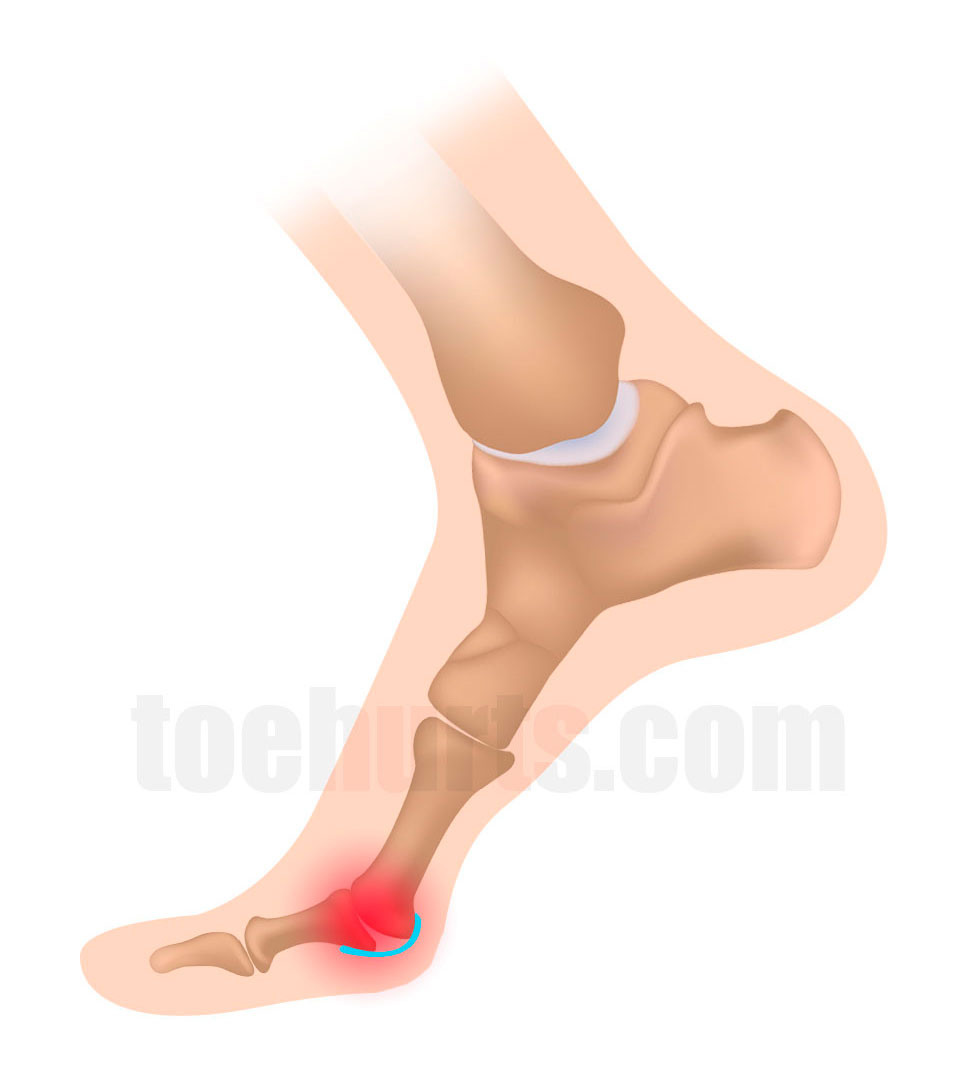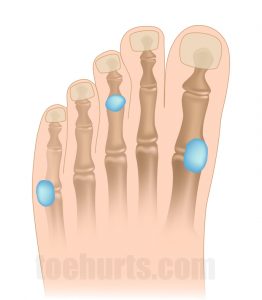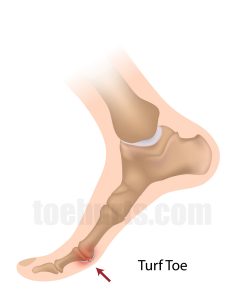Every time you walk or run, an enormous amount of pressure is placed on your big toes, as they are the part of the foot that remains in contact with the ground for the longest amount of time. Consequently, with every step, a force equal to 8 times your total body weight is placed on these toes, which can eventually contribute to the development of certain injuries in some cases. One of the more common injuries is a toe sprain, which can be sustained at any age and is often caused as the result of a direct blow, like when you stub your toe. It’s also an injury that often occurs when participating in recreational activities, such as during a football match or when taking ballet lessons; both of these activities put a lot of pressure directly on the toes.
Sprained Toes Causes
As we just mentioned, for professional athletes and sports enthusiasts, sprained toes are a relatively common injury, particularly when the sport is carried out on a surface that provides a lot of grips underfoot. If the big toe is either bent back too far (which is known as hyperextension) or bent too far forward (known as hyperflexion) it will often cause the toe to sprain. Apart from the toe being forced past its normal range of motion, direct blows are the other main cause of sprained toes. For this reason, any sporting activity that involves direct contact, such as rugby or numerous types of martial arts, increases the chance of a sprained toe being suffered. The third potential cause of a sprained toe is repetitive movement; activities that overuse the toes can lead to a sprain.
Symptoms of a Sprained Toe
- The toe will likely feel painful and extremely sensitive when touched.
- You will probably experience pain when attempting to move the toe.
- Visible signs of bruising and inflammation.
The severity of a toe sprain is determined by examining the extent to which the ligaments have been damaged; the worse the ligament damage, the worse the toe sprain.
- Grade 1. The ligament tissue contains microscopic tears.
- Grade 2. The ligament tissue has been partially torn and is not able to fully support the joint.
- Grade 3. The ligament tissue is severely damaged and provides very little if any, support to the joint.
Sprained Toes Self-Help Treatment
There are various steps you can take to treat a suspected sprained toe at home, although if possible the injury should be examined by a registered doctor. Recommended treatment methods include:
- Complete rest. Avoid putting any pressure on the toe whatsoever if possible.
- Apply ice. This will help to bring the swelling down. For the best results, apply for brief sessions of 20 minutes up to a maximum of 4 times per day. Remember to wrap the ice pack in either a towel or a cloth as applying ice directly to the skin will cause burns.
- Compression bandage. For toe sprains affecting the big toe, wrap a compression bandage around it several times and also bandage the front section of the foot, as this will help to relieve the pressure on your toe and subsequently reduce inflammation. This is only applicable if it is the big toe that is sprained since it’s not possible to apply a compression bandage to any of the other toes properly. Remember, don’t wrap the bandage around your foot too tightly as this will cut off blood circulation to your foot.
- Elevate your foot. While resting, ensure the affected foot is raised at all times so it’s higher than your heart, as this will help to decrease the amount of inflammation.
- Special footwear. In the event that you do need to walk around, it’s advisable to wear shoes that feature a stiff sole to help protect the sprained toe.
Sprained Toe Recovery
This all depends on how serious the sprain is (remember the different “grades” of sprain that we mentioned earlier?). In less severe cases, where no serious damage has been done to the ligament, the toe may fully recover in as little as a fortnight, but should the ligament be torn, it’s likely that you will have to wait as much as six weeks to see any significant improvement in the condition of your toe. Should you continue to experience pain after this length of time, it’s definitely advisable to visit a doctor for a thorough examination.
Are There Any Other Ways in Which a Sprained Toe Can Be Treated?
If you do visit a doctor after spraining your toe, they will usually recommend taking some form of anti-inflammatory medication to keep swelling to a minimum and provide pain relief. For badly sprained toes, a doctor may recommend carrying out exercises that are specially designed to build strength in your ankle ligaments and supporting muscles. Not only will this help to accelerate the healing process, but it also reduces the likelihood of a reoccurrence of the same injury. Other treatment methods that have been used to treat sprained toes with relative success include physiotherapy, osteopathy, and chiropractic. In cases where the ligament is completely torn, it may be necessary to put a cast over the toe or support it with a splint, both of which will help the toe to heal naturally.


